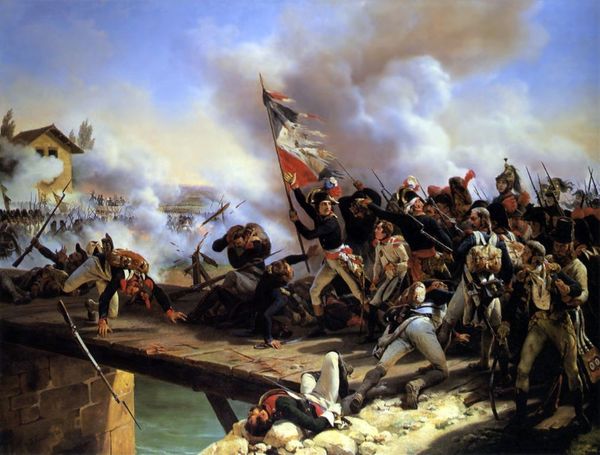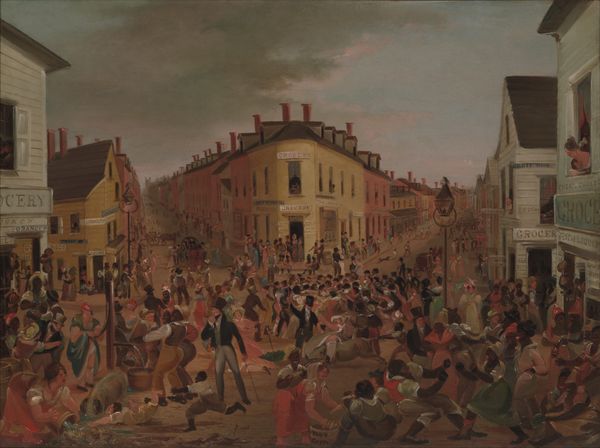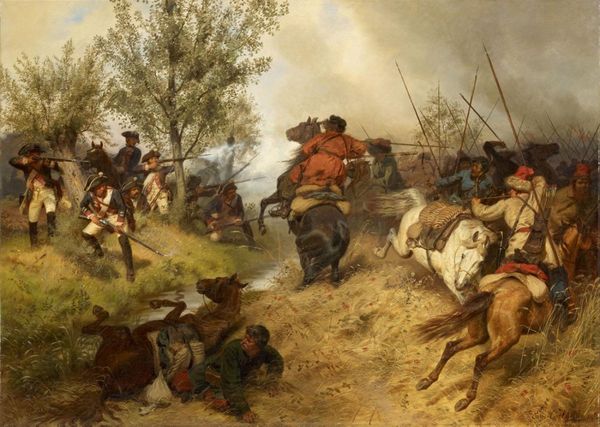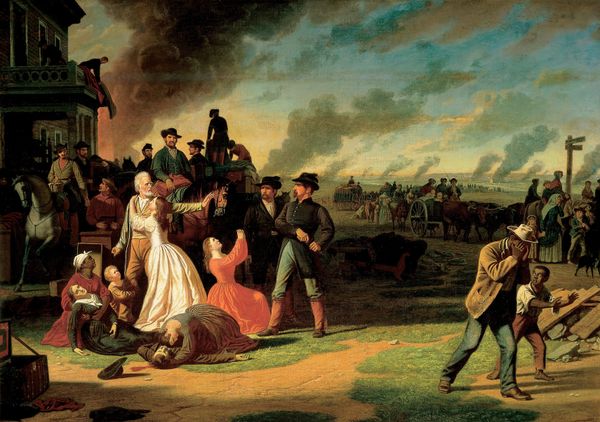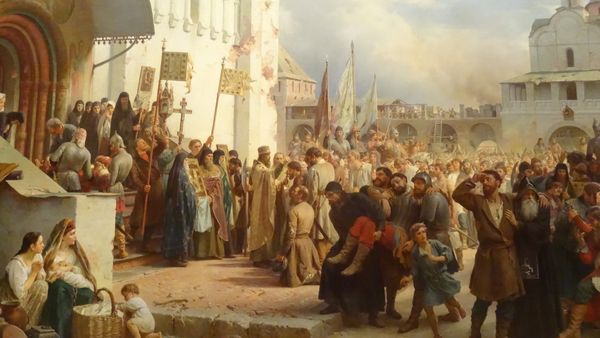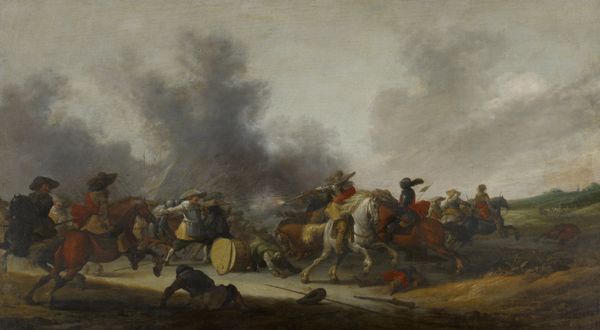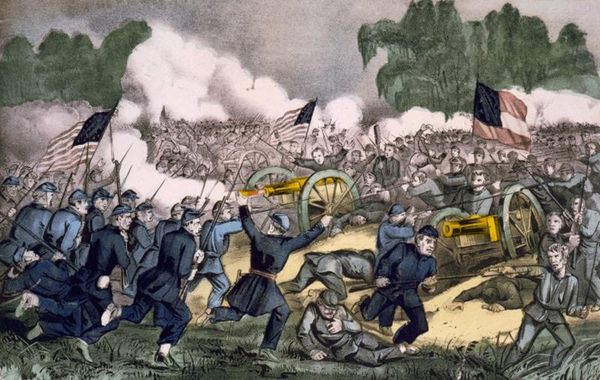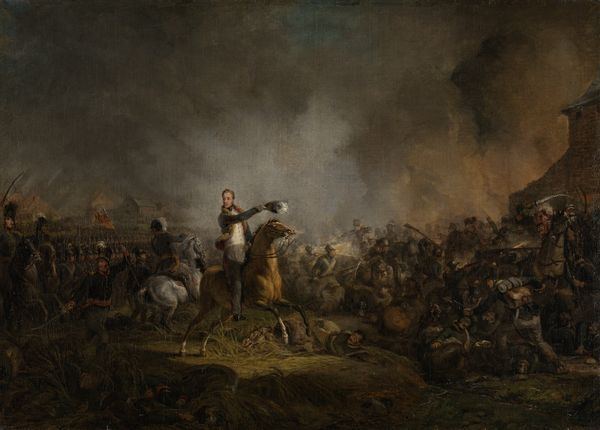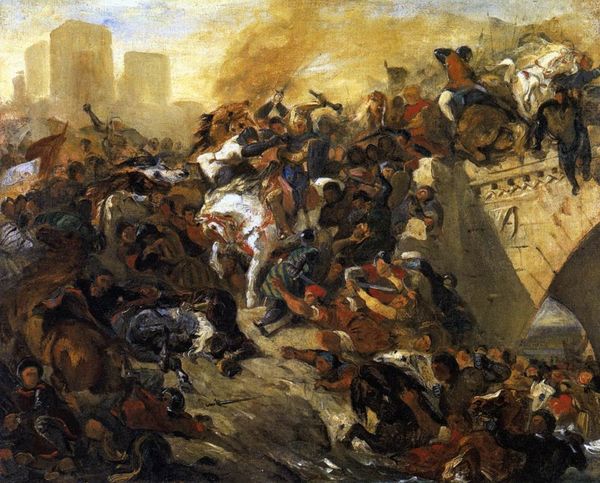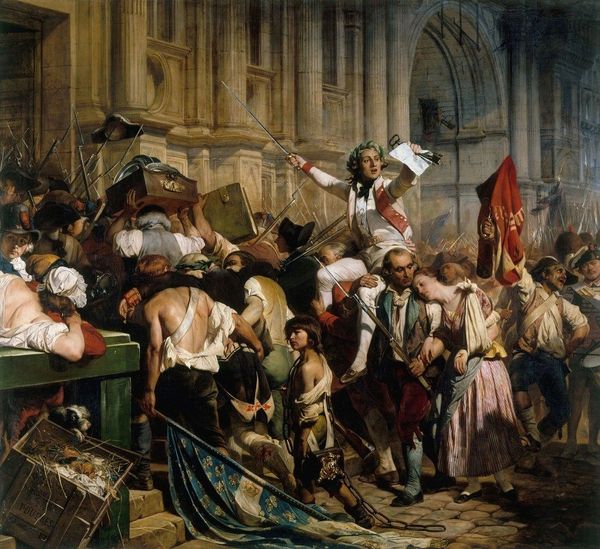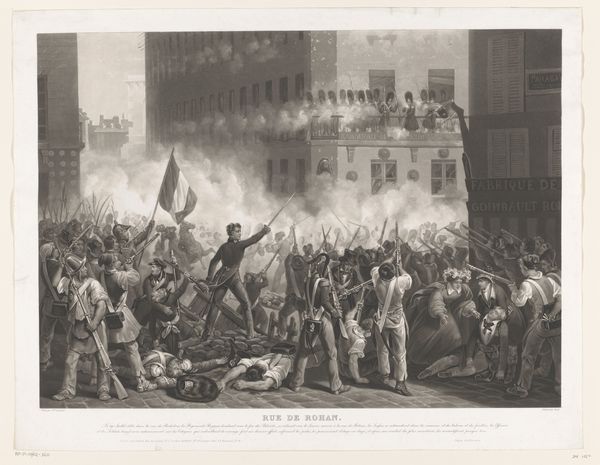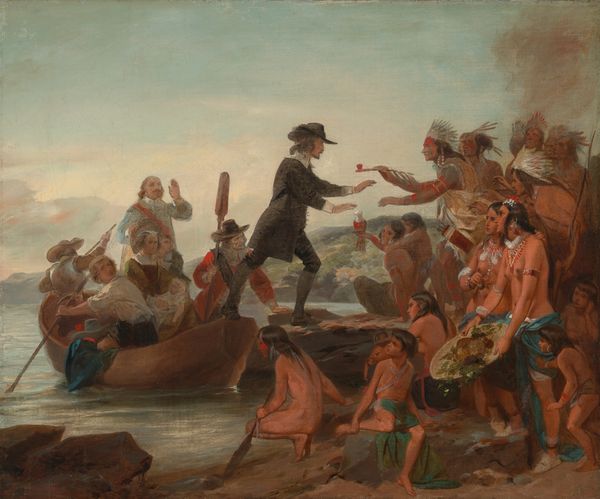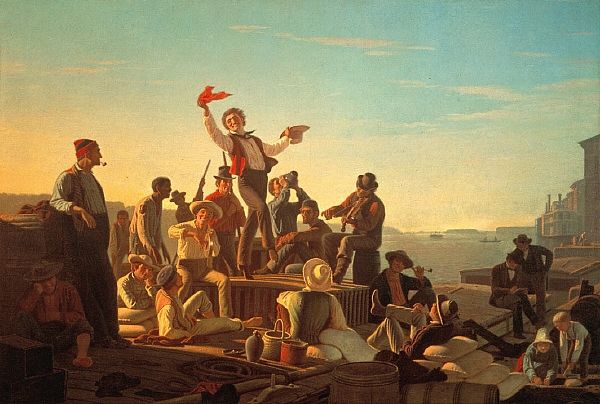
oil-paint
#
narrative-art
#
oil-paint
#
charcoal drawing
#
oil painting
#
romanticism
#
cityscape
#
history-painting
Dimensions: 36 x 46 cm
Copyright: Public domain
Curator: This dynamic scene is Horace Vernet's "On the barricades on the Rue Soufflot, Paris, 25 June 1848," painted in 1849. Immediately striking, isn’t it? Editor: Absolutely, the immediate sense is of a whirlwind. The figures are caught in moments of frantic activity and resistance; the mood feels gritty, volatile, with palpable tension in the air. Curator: Vernet’s medium of oil on canvas brings the rawness of the conflict into sharp focus. What's interesting is how the painting gives weight to the everyday materials used to create this barricade – the cobblestones, the barrels, even the ripped clothing become tools of revolution. Editor: Yes, and those visual symbols amplify the narrative. The red flag, the Phrygian cap implied if not directly visible—are shorthand for revolution itself. We see echoes of Delacroix here, yet it’s less idealized. Curator: Precisely. The painting, classified as history painting and steeped in Romanticism, speaks volumes about the social fabric of 19th-century Paris. One cannot help but observe how this wasn't a manicured battlefield, but one constructed of found, repurposed objects; each material tells its own micro-story about daily Parisian life under political siege. Editor: It feels crucial that we see the domed building in the backdrop—the Panthéon, symbolizing national identity. But here, its classical grandeur is juxtaposed against the messy, brutal reality of revolution. Curator: Consider the working-class clothing versus the soldiers’ uniforms: the socio-economic contrast is palpable and crucial to reading this work, isn’t it? It all hinges on who has access to resources, what they represent, and what can be made available or used to enact real world events such as this uprising. Editor: And look at the fallen figure in the foreground: so reminiscent of Romantic painting, almost Christ-like in their sacrifice, evoking a sense of martyrdom and lost ideals in a broader cultural memory. It shows that symbols never truly die. Curator: Thinking of this piece in terms of raw materials really does put into context the sheer force that the rebels employed and reminds us of the labor it would have required to assemble the materials. Editor: And pondering these images, emblems and archetypes together offers such a comprehensive lens. This certainly shifts the work beyond mere history painting.
Comments
No comments
Be the first to comment and join the conversation on the ultimate creative platform.
